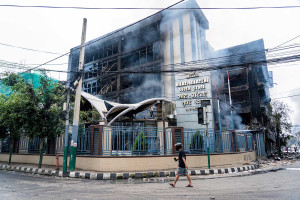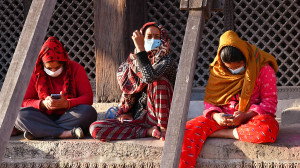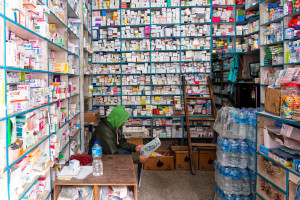Money
Sugarcane farmers settle for reduced subsidy amid political uncertainty
Farmers accept halved subsidy citing political transition, but warn falling support and delayed payments threaten future production.
Post Report
Sugarcane farmers, despite initially protesting, have accepted the government’s decision to halve the subsidy on their crop, citing the changed political environment following the Gen Z movement in September.
Farmers said that the ousted government of KP Sharma Oli had reduced the subsidy from Rs70 to Rs35 per quintal, a decision they strongly protested against. But the political turbulence that followed the youth-led protests prompted them to settle for the revised amount.
“Sugarcane farmers received Rs750 million in subsidy before Dashain at the rate of Rs35 per quintal. No dues remain,” said Kapil Muni Mainali, president of the Federation of Sugarcane Producers Association. In previous years, when the subsidy was Rs70 per quintal, farmers received around Rs1.6 billion.
Farmers produced 2.036 million tonnes (20.36 million quintals) of sugarcane last year. In November 2023, the government had set the minimum support price (MSP) for sugarcane at Rs585 per quintal—a Rs20 increase from the previous year—while keeping the Rs70 subsidy intact.
However, on July 7, the Cabinet decided to halve the subsidy for the last fiscal year’s harvest, citing pressure on the national treasury. This reduced the per-quintal subsidy to Rs35.
Feeling betrayed by what they described as a broken promise, sugarcane farmers launched protests in August demanding reinstatement of the Rs70 subsidy. According to the Sugarcane Farmers Struggle Committee, more than 1,000 farmers from Kanchanpur, Kailali, Nawalparasi, Parsa, Bara, Rautahat, Sarlahi, Mahottari, Dhanusha, Morang, and Sunsari arrived in Kathmandu to press their demand.
Initially, they staged peaceful demonstrations at Maitighar until August 30 and were preparing for further protest programmes if the government did not respond. They also called for consultations with farmers’ representatives before fixing support prices, accusing the government of unilaterally deciding rates that favoured middlemen.
Officials at the agriculture ministry said the subsidy cut resulted from an inadequate budget allocation by the finance ministry.
“Farmers were ready to escalate protests to demand Rs70 per quintal, but the country underwent a major political shift,” Mainali said. “We felt it was not the right time to negotiate and therefore accepted the revised pay.”
Farmers now plan to reopen talks with the government ahead of the harvest season, which begins in December. “The government seems more understanding of farmers’ problems this time, and we hope it will ensure a fair payment and subsidy for the new season,” Mainali added.
Sugarcane growers, however, say production costs have soared, while government support continues to shrink. They warn that the declining subsidies are discouraging cultivation. According to the federation, sugarcane output has been falling by 20 to 25 percent annually due to delayed payments and recurring disputes over pricing.
The government introduced the sugarcane subsidy programme in 2018 in response to persistent complaints that sugar mills were underpaying farmers. Farmers argue that the subsidy has been vital in offsetting high costs of ploughing, irrigation, electricity, fertiliser, and labour.
“The minimum support price barely covers production expenses,” the federation said, adding that the recent cuts were pushing farmers deeper into financial distress.
The government has also struggled to set a fair MSP that reflects actual costs. Farmers have long demanded that sugarcane prices be adjusted to match rising fuel, labour, and fertiliser costs. Adding to their woes, sugar mills often delay or withhold payments, further eroding trust in the system.
Sugarcane remains Nepal’s largest cash crop, but chronic payment delays and policy inconsistencies have driven many farmers out of the business. Even when payments are made on time, the fixed price is often too low to cover their costs.
According to the agriculture ministry, Nepal produced 3.4 million tonnes of sugarcane in 2019–20. Output dropped to 3.18 million tonnes in 2020–21, which fell to 3.15 million tonnes in 2021–22.
Until a few years ago, Nepal produced around 155,000 tonnes of sugar annually. That figure has now declined to 120,000 tonnes, according to Salt Trading Corporation, which attributes the fall to mill owners’ chronic delays in paying cane farmers.
Nepal’s annual sugar demand is about 270,000 tonnes, and the shortfall is met through imports.




 12.12°C Kathmandu
12.12°C Kathmandu












%20(1).jpg&w=300&height=200)
